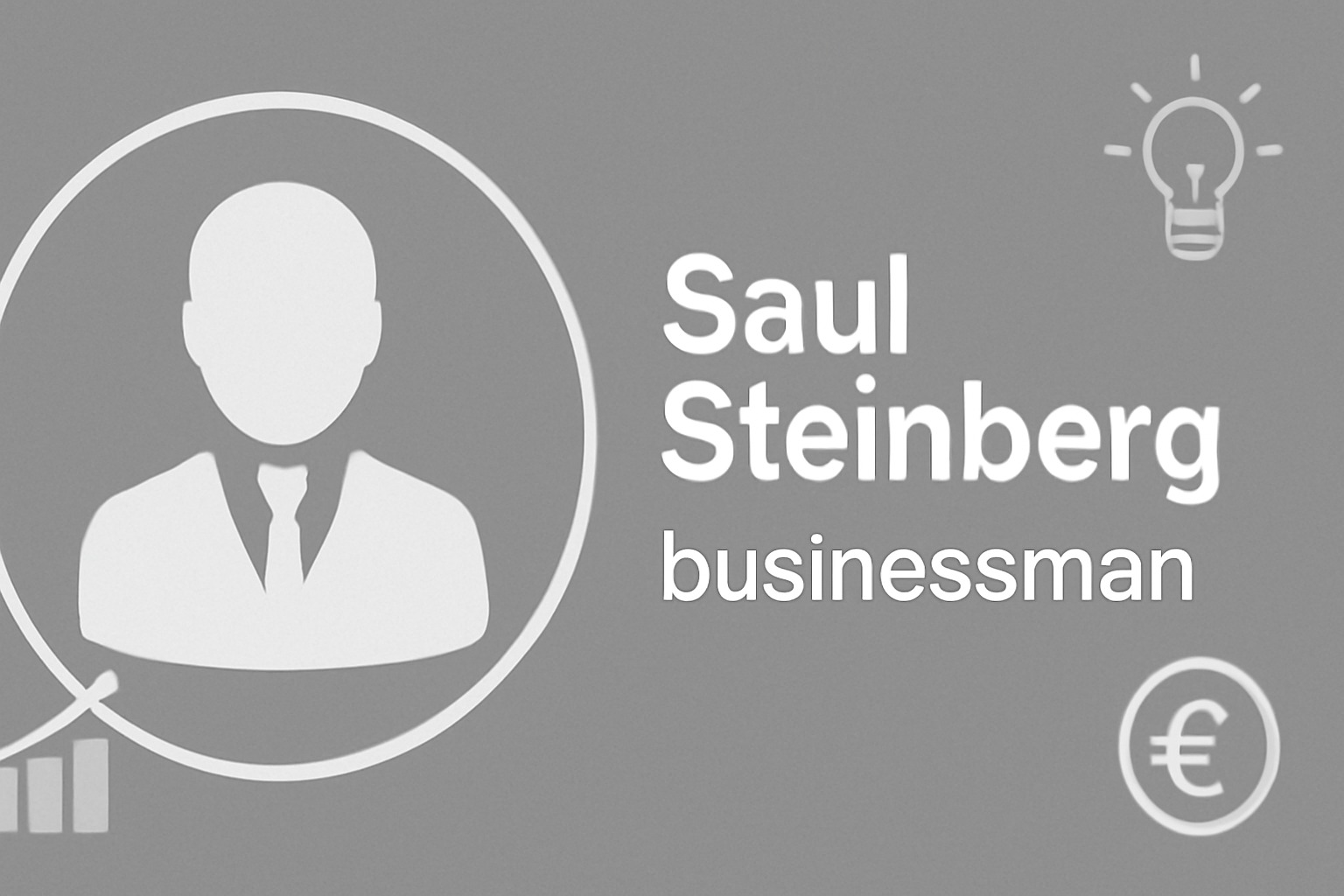Saul Steinberg Businessman: The Rise, Empire, and Legacy of a Corporate Raider
Saul Steinberg Businessman: The Pioneering Corporate Raider Who Reshaped American Finance

Introduction
Saul Phillip Steinberg (August 13, 1939 – December 7, 2012) was an American businessman and financier renowned for his aggressive corporate takeovers and high-profile financial maneuvers during the 1960s through the 1980s. As a pioneer of hostile takeovers and a master of business takeover strategies, Steinberg’s career shaped the world of corporate finance, leaving behind a legacy marked by remarkable successes and significant controversies.
Early Life and Education
Born in Brooklyn, New York, into a Jewish family, Saul Steinberg was the son of Julius Steinberg, who owned Ideal Rubber Products. Growing up alongside his three siblings, Steinberg enjoyed a comfortable upbringing which helped nurture his ambitious spirit.
Demonstrating exceptional academic prowess, he enrolled at the prestigious Wharton School of the University of Pennsylvania at just 16 and graduated by 19. This elite education laid the foundation for his understanding of complex financial systems and strategies, shaping his future as a formidable financial strategist and Wall Street investor.
Career and Business Ventures
Founding Leasco and Early Success
At the young age of 22, Steinberg founded the Leasco Data Processing Equipment Corporation, a company specializing in leasing IBM computers at competitive rates. By cleverly leveraging signed leases as collateral, Steinberg secured the necessary bank financing to fuel rapid growth. Leasco went public in 1965, marking Steinberg’s early success as a business magnate.
The Landmark Reliance Insurance Takeover
Steinberg’s most audacious and defining move came in 1968 when he orchestrated the takeover of the Reliance Insurance Company — a firm ten times the size of Leasco. This unprecedented acquisition positioned Steinberg as a pioneer among corporate raiders, demonstrating his mastery of leveraged buyouts and aggressive business tactics.
High-Profile Takeover Attempts
Throughout the late 1960s to the 1980s, Steinberg launched several high-profile takeover attempts. In 1969, he made a bold bid for Chemical Bank, one of the largest financial institutions of the time. Later, in 1984, he targeted the entertainment giant Walt Disney Productions.
Though these efforts did not culminate in successful acquisitions, Steinberg often profited handsomely through greenmail, where companies paid him to abandon his takeover attempts. This tactic, while lucrative, contributed to the financial controversy and skepticism surrounding his business methods.
Expanding the Business Empire
In the 1980s, Steinberg expanded Reliance’s holdings to include assets like the Days Inn hotel chain and the Spanish-language television network Telemundo. These acquisitions diversified his business empire, further establishing him as a significant figure in American business.
Personal Life
Saul Steinberg was married three times. His first marriage to Barbara Herzog resulted in three children, including Jonathan Steinberg, who went on to become CEO of WisdomTree Investments and married Fox Business anchor Maria Bartiromo.
His third wife, Gayfryd Steinberg, was a prominent figure in New York’s social scene. Together, they led a lavish lifestyle, residing in a 34-room duplex at 740 Park Avenue, Manhattan — a property formerly owned by John D. Rockefeller Jr. They were also avid art collectors, amassing a collection that would later be sold to help cover mounting financial debts.
Net Worth and Financial Decline
At the peak of his career, Saul Steinberg’s personal wealth was estimated to exceed $600 million, reflecting his success as a business tycoon and financial strategist.
However, the 1990s ushered in severe financial setbacks. The collapse of the junk bond market significantly impacted his holdings. Moreover, Steinberg suffered a debilitating stroke in 1995, which forced his withdrawal from active business management.
By 2000, Steinberg sold Reliance Group Holdings for $93 million — a fraction of its former value. To manage his debts, he auctioned off much of his extensive art collection and sold his luxurious Manhattan apartment, signaling the decline of his once vast business empire.
Death and Legacy
Saul Steinberg passed away on December 7, 2012, at the age of 73. Despite the controversies and criticisms surrounding his aggressive business practices and the eventual collapse of parts of his empire, Steinberg remains a notable figure in American business history.
He is remembered for his role in pioneering hostile takeovers, his innovative use of leveraged buyouts and junk bonds, and his undeniable impact on the evolution of corporate finance in the 20th century.
Frequently Asked Questions (FAQ)
Who was Saul Steinberg?
Saul Steinberg was an American businessman and financier best known for his corporate takeovers, notably the acquisition of Reliance Insurance Company, and his role as a corporate raider in the 1960s-1980s.
What is greenmail and how did Steinberg use it?
Greenmail is a practice where a company pays a premium to a potential hostile acquirer to prevent a takeover. Steinberg frequently profited from this by threatening takeovers and then selling his shares back at a profit.
What companies did Saul Steinberg try to take over?
Some notable takeover attempts include Chemical Bank in 1969 and Walt Disney Productions in 1984, though these bids were unsuccessful.
How wealthy was Saul Steinberg?
At his peak, Steinberg’s net worth was estimated at over $600 million before financial setbacks in the 1990s reduced his wealth substantially.
What is Saul Steinberg’s legacy?
Steinberg’s legacy is mixed; he is remembered as a pioneering corporate raider who reshaped business takeover strategies, yet also as a controversial figure due to aggressive tactics and the decline of his business empire.
Conclusion
Saul Steinberg’s story is a compelling chapter in American business history — one of ambition, innovation, and high-stakes risk-taking. His pioneering role in corporate acquisitions, hostile takeovers, and business takeover strategies made him a legendary business magnate and financial strategist. Though marked by dramatic financial highs and lows, his influence on corporate finance and business empire building endures, offering lessons for both current and future generations of entrepreneurs and investors.



